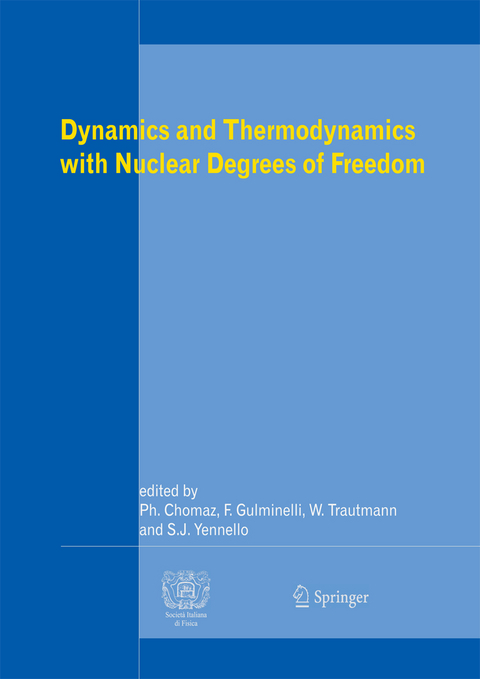
Dynamics and Thermodynamics with Nuclear Degrees of Freedom
Springer Berlin (Verlag)
978-3-642-42543-1 (ISBN)
The study of nuclear reaction dynamics and thermodynamics with nuclear degrees of freedom has progressed dramatically in the past 20 years, from inclusive charge distributions to exclusive isotopically resolved fragment observables and from schematic phenomenological break-up models to sophisticated quantum many-body transport theories. A coherent and quantitative understanding of reaction mechanisms and of the underlying nuclear matter equation of state is emerging from the analysis of experimental data and from the theoretical modeling of heavy ion reactions. In addition, the accumulated evidence for phenomena related to the liquid-gas phase transition of nuclear matter has triggered interdisciplinary activities and the transfer of useful methods. In the near future, the availability of radioactive beam facilities is expected to provide unique opportunities for extending our knowledge of the dynamic properties and the nuclear phase diagram towards exotic nuclear systems with important astrophysical implications.
The present volume is the outcome of a community-wide review of the field of dynamics and thermodynamics with nuclear degrees of freedom which has been initiated two years ago. The achievements and the outstanding open questions are presented in 26 articles of together 61 authors and collected in six topical sections. All authors are internationally recognized experts in their fields.
Challenges in nuclear dynamics and thermodynamics.- Transport Properties.- Modelization of the EOS.- Deducing the nuclear-matter incompressibility coefficient from data on isoscalar compression modes.- Systematics of stopping and flow in Au+Au collisions.- High-energy probes.- Neck dynamics.- Decay Properties.- Systematics of fragment observables.- Correlations and characterization of emitting sources.- Dynamical models for fragment formation.- Statistical description of nuclear break-up.- Comparisons of statistical multifragmentation and evaporation models for heavy-ion collisions.- Instabilities in nuclear matter and finite nuclei.- Isospin Properties.- Isospin flows.- Isotopic compositions and scalings.- Signals of Phase Transitions.- Evolution of the giant dipole resonance properties with excitation energy.- Nuclear thermometry.- Calorimetry.- Moment analysis and Zipf law.- Many-fragment correlations and possible signature of spinodal fragmentation.- Fluctuations of fragment observables.- Bimodalities: A survey of experimental data and models.- Challenges and Perspectives.- Detection.- Nuclear multifragmentation, its relation to general physics.- Links between heavy ion and astrophysics.- Possible links between the liquid-gas and deconfinement-hadronization phase transitions.- The challenges of finite-system statistical mechanics.- Small fermionic systems: The common methods and challenges.
| Erscheint lt. Verlag | 13.12.2014 |
|---|---|
| Zusatzinfo | XII, 342 p. |
| Verlagsort | Berlin |
| Sprache | englisch |
| Maße | 210 x 297 mm |
| Gewicht | 922 g |
| Themenwelt | Naturwissenschaften ► Physik / Astronomie ► Atom- / Kern- / Molekularphysik |
| Technik ► Maschinenbau | |
| Schlagworte | astrophysics • Experiment • heavy ion collisions • Mechanics • nuclear matter • Nuclear thermodynamics • scaling • thermodynamics • Transit |
| ISBN-10 | 3-642-42543-7 / 3642425437 |
| ISBN-13 | 978-3-642-42543-1 / 9783642425431 |
| Zustand | Neuware |
| Haben Sie eine Frage zum Produkt? |
aus dem Bereich


